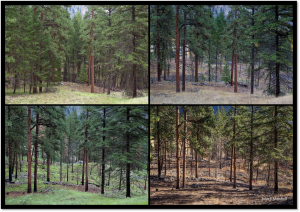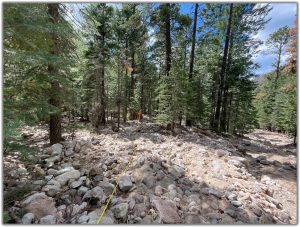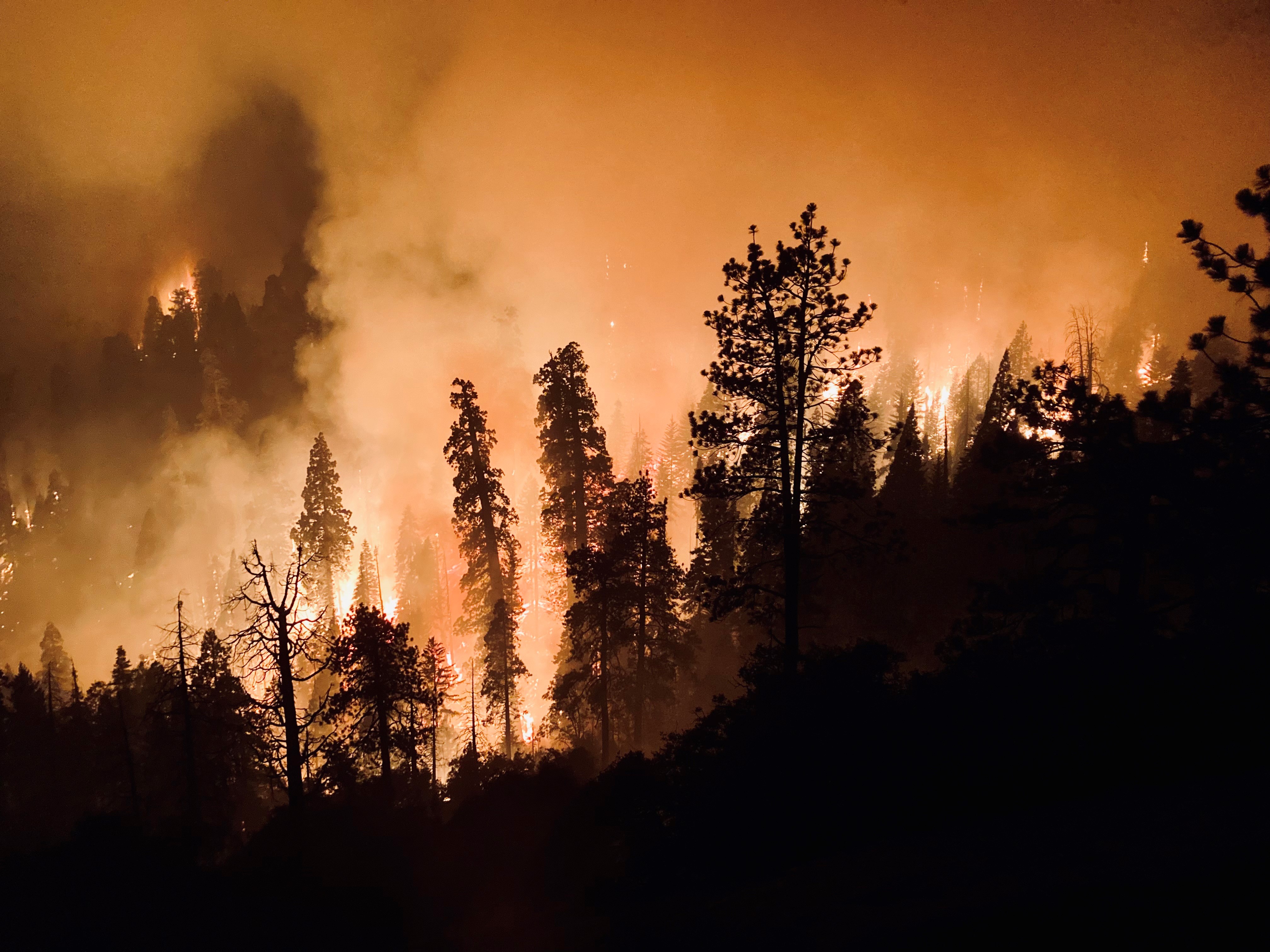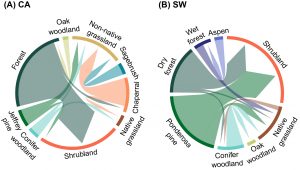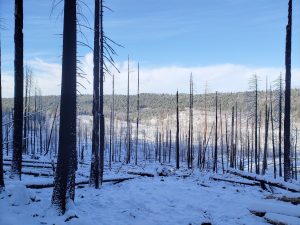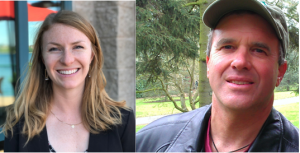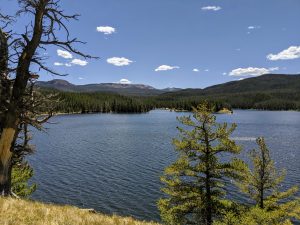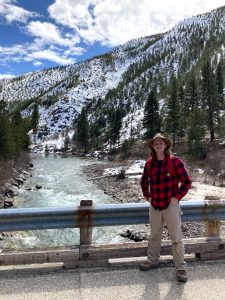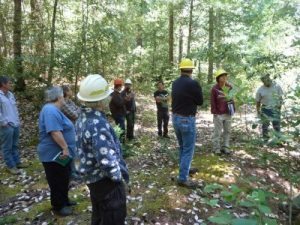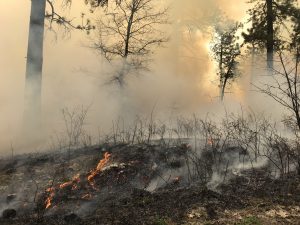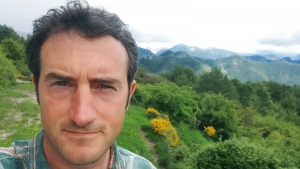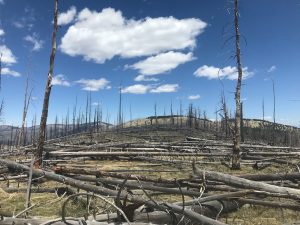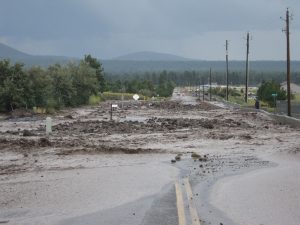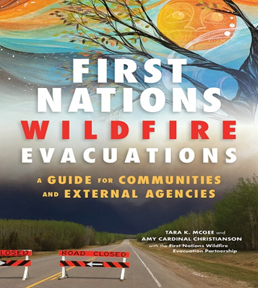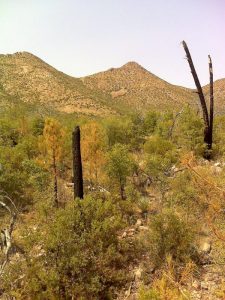Find recordings of all our webinars on our You Tube Channel @swfirescience.
Wildfire and Climate Change Adaptation
IN A NUTSHELL Experts tell the story of forest change since colonization, and share insights and answer questions about how we might steward a legacy of forest change and mitigate climate change impacts. https://youtu.be/Jo-Czzvo9JY Description: Climate change and wildfires pose…
Geomorphic Recovery and Post-Fire Flooding Implications from Museum Fire
IN A NUTSHELL: Overview of post-fire flooding including how flood mitigation structures impacted downstream flow. https://youtu.be/Uhs1Z6II5i0 Description: The 2019 Museum Fire burned nearly 2,000 acres of steep forested terrain abutting Flagstaff city limits in northern Arizona. In addition to the immediate…
Nighttime Fire
Presenter: Patrick H Freeborn, PhD, Research Physical Scientist with the USDA Rocky Mountain Research Station Date: December 6, 2022 at 12 MDT Wildfire activity typically subsides sufficiently enough at night to provide firefighters with opportunities to rest and recover. However,…
Vegetation Type Conversion
Presenter: Christopher H. Guiterman, Research Scientist at the Cooperative Institute for Research in Environmental Sciences (CIRES) at the University of Colorado Boulder and NOAA’s National Centers for Environmental Information (NCEI) Date: September 21, 2022 at 12:00pm AZ / 1:00pm MDT…
Post-Fire Logging
Presenter: Camille Stevens-Rumann, Assistant Professor of Forest and Rangeland Stewardship at Colorado State University Date: August 31, 2022 at 12:00pm AZ / 1:00pm MDT Following a wildfire, successful tree regeneration is mediated by multiple factors, from the microsite to landscape…
Wildfire, Human Health, and Environmental Justice
Presenters: Savannah D’Evelyn, Postdoctoral Fellow with the University of Washington, Department of Environmental & Occupational Health Sciences and Ed Smith, Terrestrial forest Ecologist with The Nature Conservancy’s California Program. Date: July 19, 2022 11am AZ / 12pm MDT Increasing wildfire…
Protecting Denver’s Water Supply
Presenter: Dr. Kelly Jones, Associate Professor of Ecological Economics with Colorado State University, Human Dimensions of Natural ResourcesDate: June 22, 2022 11am AZ/12pm MDT Collaboratively-funded fuel treatments are becoming more common in the western U.S. to proactively address wildfire impacts.…
Outdoor Recreation & Wildfire
Date: May 10, 2022 11am AZ/12pm MDTPresenter: Adam Benefield, CTC Technology and Energy Federally owned public lands, originally designated to properly manage natural resources, are prone to wildfire in the southern Rocky Mountains, a risk which has increased as a…
Collective Action for Wildfire Risk Reduction
Date: April 19, 2022 11am AZ/12pm MDTPresenter: Dr. Susan Charnley, Pacific Northwest Research Station Over the past decade, government policies and programs to incentivize “all-lands approaches” to reducing wildfire risk have emerged that call for collective action among diverse public,…
Managed Wildfire
Date: March 23, 2022 11am AZ/12pm Mountain DaylightPresenters: Stephen D. Fillmore, PhD Student, University of Idaho, Dr. Sarah McCaffrey To improve understanding of the managed wildfire decision-making process on federal lands (USA), we conducted a mixed methods review of the…
Wildfire, Fish, & Water Resources in the Western US
Presenter: Dr. Patrick Belmont, Utah State UniversityDate: February 15, 2022 12pm Mountain Wildfire has increased 20-fold in the last 30 years in the Western U.S., partly due to climate change and partly due to forest and fire management practices. At…
Postfire Management in Frequent-Fire Conifer Forests
Presenter: Dr. Jens T. Stevens, National Program Lead for the Wildland Fire and Fuels Research, USDA Forest ServiceDate: January 19, 2022 12pm Mountain Standard Time The increasing incidence of large wildfires with extensive stand-replacing effects across the southwestern United States…
Full-Cost Accounting of the 2010 Schultz Fire
Presenter: Dr. Melanie Colavito, Ecological Restoration Institute, Northern Arizona University; Dr. Catrin Edgeley, Northern Arizona University; and Dr. Evan Hjerpe, Conservation Economics InstituteDate: December 7, 2021 12pm Mountain Time The 2010 Schultz Fire was ignited by an abandoned campfire on…
First Nations Wildfire Evacuations: A Guide
Presenter: Dr. Henok W. Asfaw, Postdoc and Project Manager for the First Nations Wildfire Evacuation Partnership Project, University of AlbertaDate: November 18, 2021 12pm Mountain Time In this presentation, we will present results of research carried out as part of…
Repeat Photography and Post-Fire Ecosystem Change in SE Arizona
Date: October 26, 2021 1pm AZ/2pm MDTPresenters: Jim Malusa, University of Arizona, with an introduction by Don Falk, University of Arizona While making a vegetation map of the Chiricahua Mts in 2010, I took georeferenced photos and notes on the…

